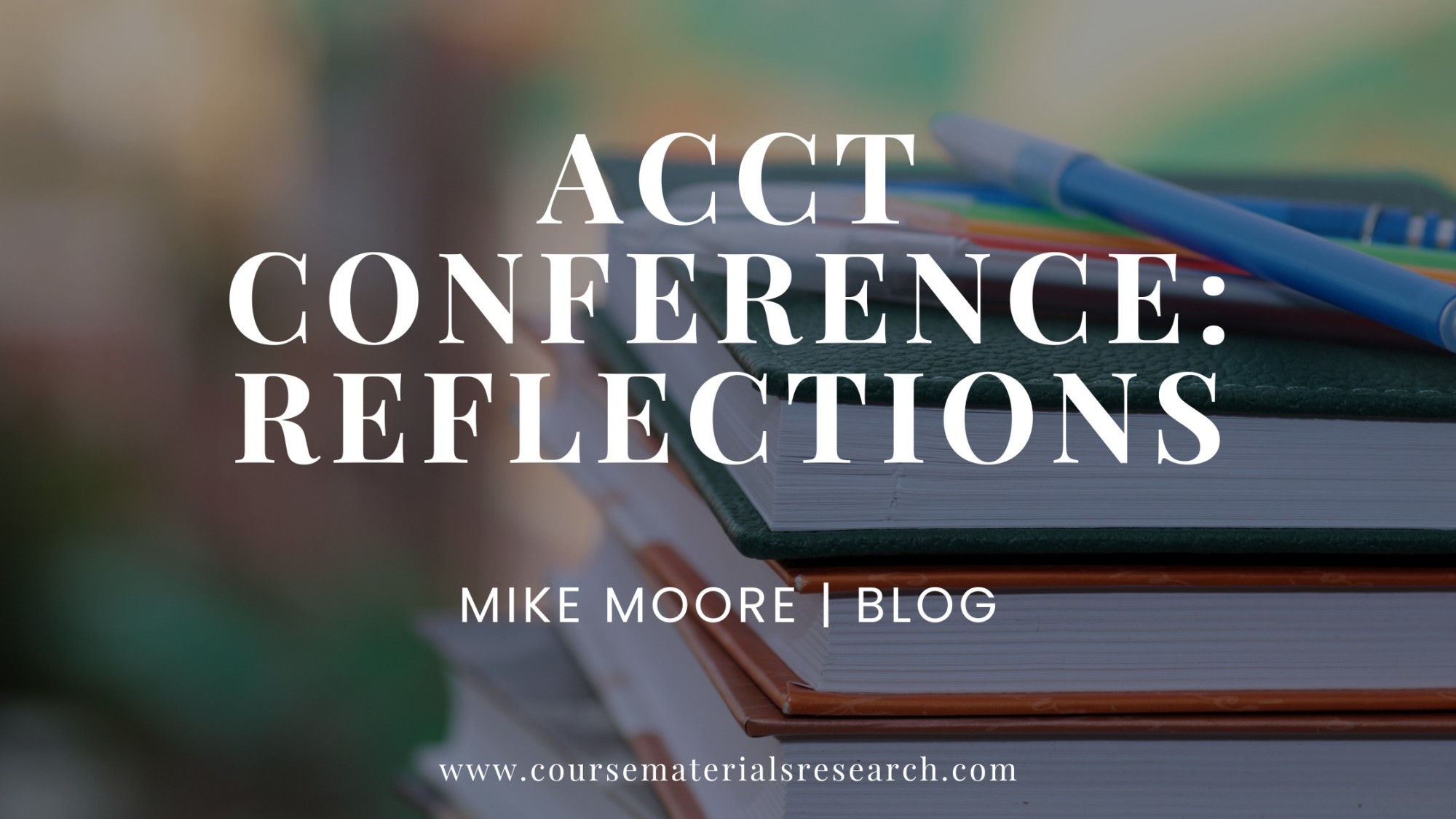ACCT Conference: Reflections

ACCT Conference: Reflections
I recently presented at the Association of Community College Trustees (ACCT) annual conference in New York City with my guy Brad Piazza. Brad is the Vice President of Academic Affairs at Waukesha County Technical College and a co-author on our recently accepted manuscript. I think our presentation went very well as there appeared to be standing room only. Brad dazzled with his humor and passion for student success and course materials. I had a few takeaways from our session.
Education
My biggest takeaway from our presentation and its response was the work still necessary to educate higher education stakeholders on current course materials interventions like Inclusive Access, Equitable Access, and Open Educational Resources. Despite the growth in adoption of these course materials interventions models, more work is needed to help administrators understand the details. My work is focused on understanding how these interventions impact student outcomes like success rate (Grade C or better) and course completion rate (Grade D or better). I don’t provide guidance on use of publisher or bookstore lease operator, but my experience in the bookstore industry allows me to provide administrators with a unique perspective. One of the biggest challenges ahead is not trying to convince higher education that anyone intervention is above the rest, but to educate them on how the intervention models can help their students succeed in the classroom.
Access or Content
What is the more important element of Inclusive and Equitable Access – access or content type? This was a great question asked during our session. As with most things in life, you can’t have your cake and eat it too. Therefore, I think access is the more important of the two choices. Access means the reduction or elimination of all front-end barriers for students. Access means students not choosing between course materials and other basic needs like food or rent. I spent 13 years on the frontlines of course materials acquisitions. I understand the decisions students must make semester after semester. While there are segments of the higher education population that has no problem finding and acquiring their course materials, there are large segments of higher education’s underrepresented student population that are put in impossible situations. However, that doesn’t mean content type is not as equally important.
Content Type
As Jason Lorgan wrote for my blog, a digital-first strategy has many benefits beyond just cost savings. The type of content used in the course materials revolution is still a very important consideration. Courseware and interactive digital textbooks provide students with a more intimate learning experience. The difference between courseware/digital textbooks and flat digital textbooks and print is how students are nudged into exploring topics further or the built-in support to help faculty support students who need it, among other things. So, the type of content can make a difference for all students.
Wrap Up
As I reflect on our ACCT presentation, those with a stake in course materials need to make more of a concerted effort to educate faculty and administrators. Less selling more educating. I look forward to seeing everyone at the Textbook Affordability Conference in Chicago November 9th through the 11th and at NACAS C3X in Las Vegas November 14th through the 16th. I will be providing course materials intervention education at both conferences, so please feel free to come say hello. As always, thanks for checking in and I’ll see you next time.
-MM

